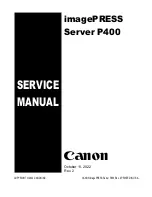
2
A
BOUT
T
HIS
G
UIDE
Table 2
Text Conventions
Convention
Description
“Enter” vs. “Type”
“Enter” means to type something, then press the Return or Enter key. Do not press the
Return or Enter key when an instruction says only “type.”
“Syntax” vs. “Command”
The term “syntax” means the general form of a command that contains variables, such
as a port, path, value, address, or string. You must supply values for the variables. For
example, enable RIPIP by using the following syntax:
SETDefault !<port> -RIPIP CONTrol = Listen
You must supply a port number for <port>.
The term “command” means that all values have been supplied and you can enter the
command as shown. For example, remove the IP address by entering the following
command:
SETDefault !0 -IP NETaddr = 0.0.0.0
This guide uses upper- and lowercase letters to distinguish the full form of commands and
command syntax from the abbreviated form. You can enter a command in abbreviated
form by typing only the uppercase portion. It does not matter whether you type the
command in upper- or lowercase letters.
Text represented as
screen
display
This typeface
represents displays that appear on your terminal screen, for
example:
NetLogin:
Text represented as
commands
This typeface
represents commands that you enter, for example:
SETDefault !0 -IP NETaddr = 0.0.0.0
Keys
This guide refers to named keys by their names, such as the Return key or the Escape
key, or in brackets, such as [Return] or [Esc].
If you must press two or more keys simultaneously, the keys are linked with a plus sign
(+), for example:
Press [Ctrl]+[Alt]+[Del].
Italics
Italics
denote
new terms
or
emphasis
.
CS3000BookFile Page 2 Tuesday, October 15, 1996 5:12 PM






































